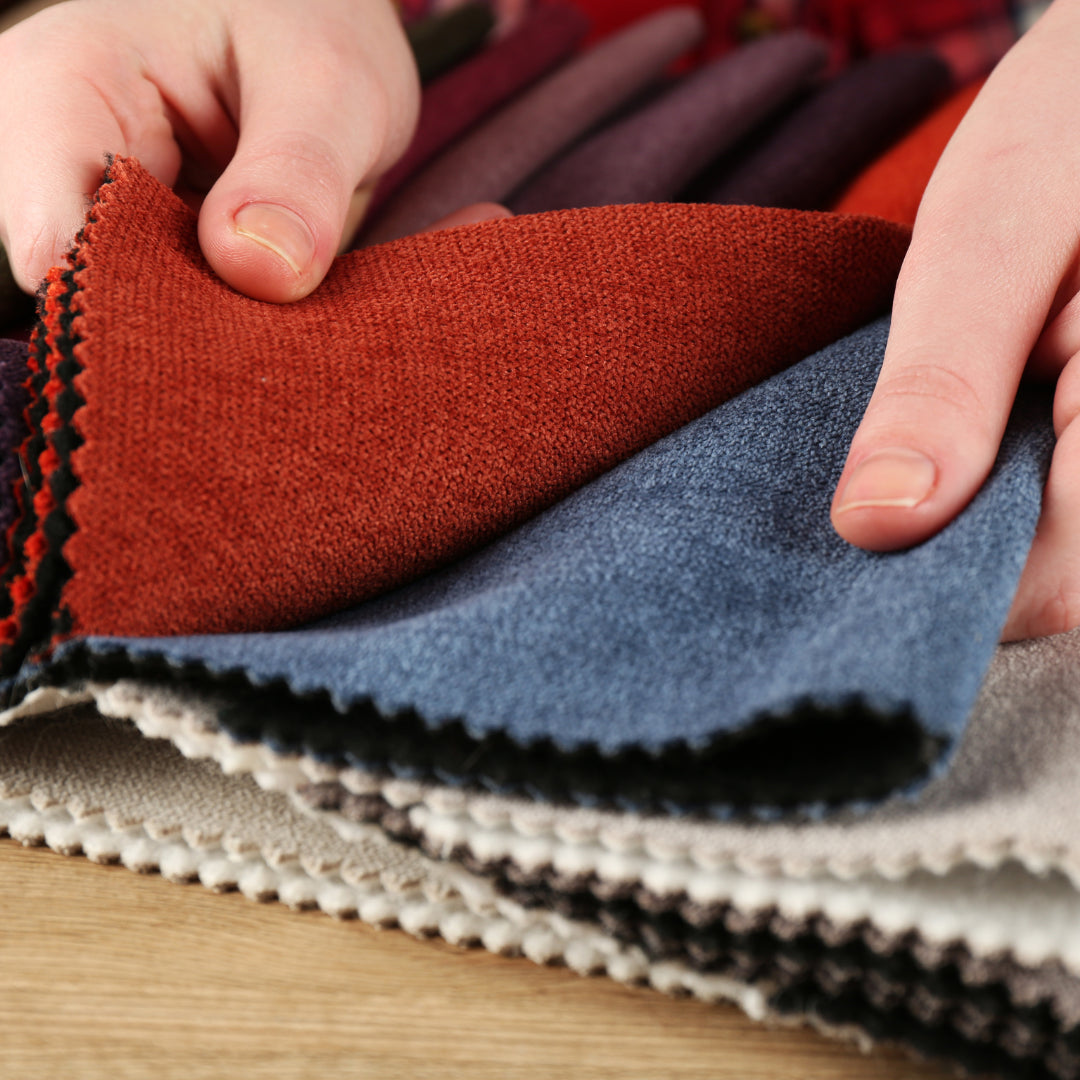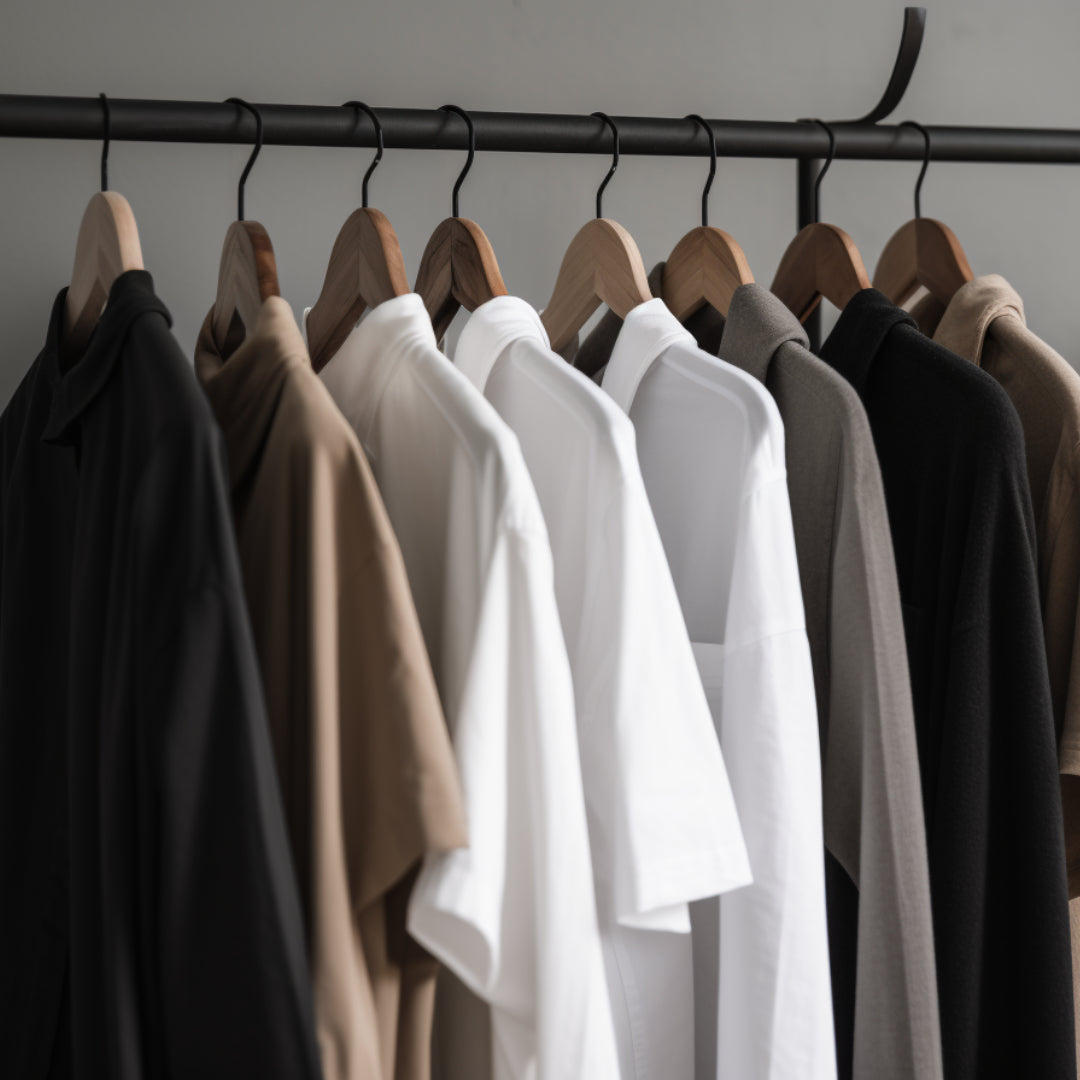Fabric Fundamentals: A Close Look at Polyester, Cotton and Blended Textiles
When it comes to fabrics, things can get kinda confusing really fast with all the different types, blends, and technical terms used. But we wanna break it down into simple terms so you really understand the key differences between common fabrics like polyester, cotton and blends.
Polyester
Polyester is a synthetic fabric made from petroleum with lots of useful properties. The polymers used to make polyester fabrics are really strong and durable, plus polyester is wrinkle-resistant, quick-drying, and retains its shape well. It's also generally cheaper than natural fabrics like cotton.
But polyester has some downsides too. It doesn't breathe super well, so it can get hot and sweaty to wear polyester fabrics. The material also builds up static easily. And lower quality polyester may pill or degrade over time.
Polyester works well for performance wear and athleisure though since its durable, dries quick and resists wrinkles. It's also used a lot in home furnishings like curtains and upholstery where durability and affordability are key.
Cotton
Cotton is a soft, breathable natural fabric that comes from the fibers surrounding cotton seeds. It's by far the most popular fabric for clothing and home goods. Cotton's lightweight and comfy to wear plus it usually washes pretty good on gentle cycles.
The natural fibers also soak up sweat real well, so cotton works great for t-shirts, towels and sheets and whatnot. And it doesn't pill as easy as other natural stuff like wool or linen.
But cotton does wrinkle mad easy, unless you treat it with wrinkle-free finishes. It can also shrink real bad if you dry it wrong on high heat. Cotton can get damaged by moths and mildew too if you don't store it right.
So for most t-shirts, dresses, jeans, sheets and towels, cotton's hard to beat 'cause it's so comfy, breathable and easy to take care of. But you gotta be careful with how you wash and dry it.
Blends
Blends combine different fabrics together to get the best properties of each material. Some popular blends include:
Poly-cotton: Mixes 50-65% cotton with 35-50% polyester. This gives a soft, breathable fabric that resists wrinkles and shrinkage better than 100% cotton. It's great for t-shirts, dresses, and other casual wear.
Rayon-cotton: Often mixed half and half. Rayon made from cellulose offers cotton-like softness with more drape and flow. The blend makes nice tops and dresses.
Wool-polyester: Warmth and softness from the wool meets durability and wrinkle resistance of the polyester. Common in suits, dresses, and winter wear.
Spandex-cotton: Adds stretch and flexibility to cotton with just a little spandex (2-5% is common). This blend is nice for activewear like leggings and t-shirt dresses.
In general, blended fabrics give you the chance to balance desirable qualities of different textiles. And fabric makers keep developing innovative new blends too as technology progresses.
How to Tell Fabric Types Apart
Sometimes just by looking and feeling a fabric you can guess if it's polyester, cotton, or a blend. But there are a few little "burn tests" you can do to verify what the fabric is too.
Here's a quick guide to telling common fabrics apart by burning a small piece of thread:
100% Cotton: Burns slowly with an orange flame that has a faint odor. Leaves light gray ash behind.
100% Polyester: Burns quickly with a chemical odor. Melts into hard black beads first before leaving no ash/residue.
Poly-Cotton Blend: Burns slowly at first then melts into hard black beads. Has an chemical smell and leaves a little gray ash behind.
Rayon or Viscose: Burns like paper leaving fine gray/black ash behind. Has an odor like burnt paper or leaves.
Wool: Burns slowly with a strong sulfur or burnt hair smell. Leaves a brittle black ash residue.
Silk: Burns very quickly producing a smell like burnt hair. Leaves a brittle grayish ash.
Linen: Burns slowly with a faint grassy odor. Leaves light gray ash residue.
Just cut a single thread and hold with tweezers over a flame to test out any unknown fabric. This works better than burning a large swatch which may have chemical finishes that alter the burn characteristics.
Factors that Impact Fabric Quality
Whether made from natural or synthetic fibers, a lot of factors influence the quality, feel, and performance of fabrics:
Fiber Length - Longer fibers feel softer and make more durable yarn that resists pilling. High quality cotton and wool use long staple fibers.
Yarn Size - Thicker yarns generally feel heavier and last longer. Fine lightweight yarns make sheer delicate fabrics.
Yarn Twist - The tightness of the twist impacts durability, wrinkling, and absorbency. High twist cotton stands up to frequent washing; low twist makes soft terrycloth towels.
Thread Count - Number of threads woven per square inch. 180+ is best for cotton sheets; 120-150 works for casual cotton tops. Too high over 300 can give stiff fabric.
Chemical Finishes - Special coatings may add water resistance, fire retardance, wrinkle resistance or other qualities. But some washes out over time.
Dye Method - Different fiber types accept dye differently for colorfastness. Reactive dye works best for cotton, disperse dyes for synthetics like polyester.
When you feel and inspect fabric content tags closely, you can get a sense of the quality and likely performance. And higher priced garments or textiles typically use better quality materials that will last longer.
Pros and Cons of Common Fabrics
Here's a quick cheat sheet summarizing the main advantages and disadvantages of polyester, cotton and popular blends:
|
Fabric |
Pros |
Cons |
|
Polyester |
Durable, wrinkle resistant, quick drying, retains shape |
Poor breathability, static, lower quality may pill |
|
Cotton |
Soft, breathable, moisture wicking, affordable |
Wrinkles easily, prone to shrinkage |
|
Poly-Cotton |
Soft, breathable, resists wrinkles and shrinking |
Not as strong as 100% polyester |
|
Rayon-Cotton |
Soft drape and flow |
Wrinkles easily, weaker when wet |
|
Wool-Polyester |
Warm, wrinkle resistant |
Can be itchy for sensitive skin |
|
Spandex-Cotton |
Adds stretch and flexibility |
Heat sensitive, chlorine degrades spandex |
So when choosing fabrics, think about when and how they’ll be used. Workout wear needs very different properties than bed sheets for example.
Fabric Care Tips
To make your clothes and home textiles last, proper laundry and storage methods matter too. Here are some top tips:
Pre-treat Stains - Don't let stains set or dry. Dab liquid dish soap, vinegar or stain remover sticks on fresh stains before washing.
Wash Gentle Cycles - Use cool or warm water on delicate/gentle cycles for most fabrics besides towels and sheets.
Air Dry When Possible - Line or flat drying avoids heat damage from dryers. Especially important for spandex blends.
Inspect Labels - Symbols indicate safe washing temps, if bleaching is allowed, drying method and iron settings.
Zip Up - Zip or button clothes to protect fabrics from snags and friction damage in the washer and dryer.
Avoid Overloading - Too many items causes wrinkling and uneven cleaning.
Clean Out Lint Traps - Excess lint can damage clothes in dryers and poses a fire hazard over time.
Fold Properly - Loose folds help fabrics breathe; tight folds can cause creases. Refold and rearrange periodically.
Following fabric care recommendations helps your clothes keep their shape and appearance much longer. And a few smart storage tricks prevent damage too.
Final Thoughts
When selecting fabrics for sewing or buying clothes and home goods, think about which fiber blends work best for the intended use. Synthetics such as polyester have beneficial properties but may not provide all-day comfort. Natural fibers compromise some durability for improved breathability and coziness. Blended fabrics combine the strengths of both.
Knowing the traits of common textiles like polyester, cotton, and more assists in making informed choices. And using the right care techniques for each fabric helps items remain in good condition for years. Please let us know if you have any other fabric or care questions!





